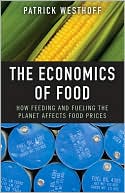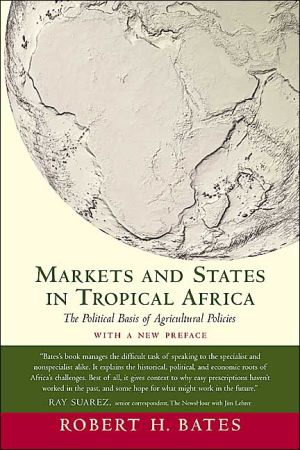Marketing of Agricultural Products
Now in its ninth edition, Marketing of Agricultural Products by Kohls and Uhl, is still the best in its field. Geared towards readers with little or no experience, this text strikes a balanced treatment between the facts, principles, and values involved in food marketing. It blends economic, marketing, and institutional approaches to provide the foundation needed by today's readers.\ SOME OF THE NEW FEATURES OF THIS EDITION ARE:\ \ New mini-cases dramatizing food marketing situations and...
Search in google:
The ninth edition of Marketing of Agricultural Products contains completely updated content, tables, figures, and references including the 1997 Census of Agriculture and Business, as well as Trade data, and U.S. Department of Agriculture studies. It blends marketing and economic theory with real world analytical tools to assist readers in better understanding the food system and making profitable marketing decisions.This edition includes increased treatment of food value-adding and marketing management, including advertising, new product development, sales promotion, pricing, and logistics.For farmers, consumers, or those in food marketing. Booknews Discusses food marketing systems, covering the phases of food marketing from farmers and farm supply industries to food distribution and consumer interests. Emphasizes marketing as a productive, value- adding process for readers with little or no experience in economics. The text also develops and applies analytical tools for decision making and problem solving while integrating various approaches to food marketing systems. Also discusses co-ops, global food markets, risk management in agriculture, agricultural business management careers, and the growing concern of food quality. Annotation c. by Book News, Inc., Portland, Or.
This ninth edition represents an updating of Marketing of Agricultural Products, first published in 1955. As with previous editions, the goal has been to keep the text up to date with the real world in which food marketing students and managers find themselves. More than ever before, the appropriate organization and functioning of the world's food marketing system are of concern not only to those producers and marketing firms directly involved but to consumers and the general public as well. Increasingly, foreign trade in agricultural and food products ties domestic agricultural markets into the worldwide scene.\ No book can be all things to all people. This book, like the previous editions, is written for those who are beginning their study of the food marketing system. It is designed for students who have had little or no previous contact with marketing or economics. The book presents the starting points for learning and discussion and leaves to the teacher the task of adjusting the levels of knowledge and achievement to the particular class involved. To aid in this, bibliographic references to key government and commercial references are supplied. It is hoped that these will encourage further study and call attention to the immense volume of marketing literature now available.\ Textbooks are not novels! Learning requires work and discipline. However, it has been our pleasure over the years to hear students' and instructors' favorable comments on the readability of this book. Some of our colleagues have commented that it is too elementary and easy. This, however, we have accepted as a compliment rather than a criticism. Textbooks should be written for students, not our professional colleagues.\ The approach of this edition continues that of earlier editions. It attempts to look at the food marketing system from several angles: the functional approach, the institutional approach, the micro-firm and macro-system approaches, and the commodity approach. Each of these approaches provides unique and complementary perspectives of the food industry. The book also blends the descriptive, analytical, and normative approaches to understanding the food marketing system.\ New material has been added to update important market developments and events, particularly in the areas of vertical market coordination, risk management, farm policy, international trade and globalization, biotechnology, e-commerce, and value-added marketing strategies. Mini-cases have also been added to illustrate the controversial nature of food marketing and food marketing public policy concerns. There are also many new references to valuable public and private food marketing world wide web sites.\ The objectives of the book continue to be to assist students and managers in understanding the structure and workings of the food marketing system, to examine how this system affects farmers, consumers, and middlemen, and to illustrate how this dynamic market system has responded to technological, social, economic, and political forces over time. The book reflects the adage, Nothing is changing, except everything.\ While the focus of the book remains on the economics of the food system, there are liberal references to the social, political, and historical aspects of food marketing. The authors are aware of the use of this text throughout the world. The book emphasizes the U.S. food marketing system, but there are extensive references to marketing and market development in other countries.\ In any book that has an extended history such as this one, many people have made valuable comments and suggestions for improvement. Indeed, in a survey book like this, it is difficult to cite all the original sources of material. We have borrowed shamelessly from our book users and competitors in writing the text. The authors would be happy to receive suggestions and critical comments from readers (uh1@agecon.purdue.edu). The author's class at Purdue that uses this text can be visited at the web site: http://www.agecon.purdue.edu/academic/agec220/index.html\ We wish to acknowledge, in particular, the following reviewers who provided valuable insight and helpful feedback in the preparation of this revision: Dragan Miljkovic, Southwest Missouri State University; Wendy Umberger, University of Nebraska-Lincoln; Anthon H. Turley, Ricks College; Robert Herrmann, Penn State University; Kevin J. Bacon, Central Missouri State University; John E. Cottingham, University of Wisconsin-Platteville; Douglas J. Miller, Iowa State University; and Raymond T. Folwell, Washington State University.\ We are grateful for the administrative support of the Department of Agricultural Economics at Purdue and to our families.\ Richard L. Kohls Joseph N. Uhl
PrefaceAbout the AuthorsPt. IThe Framework of the Marketing Problem11Introduction to Food Marketing32Analyzing Agricultural and Food Markets213Agricultural Production and Marketing44Pt. IIFood Markets and Institutions634Food Consumption and Marketing655Food Processing and Manufacturing816Food Wholesaling and Retailing967The International Food Market117Pt. IIIPrices and Marketing Costs1358Price Analysis and the Exchange Function1379Competition in Food Markets16610Farm and Food Prices17911Food Marketing Costs196Pt. IVFunctional and Organizational Issues21712The Changing Organization of Food Markets21913Cooperatives in the Food Industry23814Market Development and Demand Expansion25515Market and Bargaining Power27016Market Information28617Standardization and Grading30018Transportation31819Storage33220Risk Management and the Futures Market342Pt. VThe Government and Food Marketing36521Government Price, Income, and Marketing Programs36722Food Marketing Regulations382Pt. VICommodity Marketing39723Livestock and Meat Marketing39924Milk and Dairy Product Marketing42125Poultry and Egg Marketing43526Grain Marketing45027Cotton and Textile Marketing46928Tobacco and Tobacco Product Marketing47929Fruit and Vegetable Marketing491Glossary511Index533
\ BooknewsDiscusses food marketing systems, covering the phases of food marketing from farmers and farm supply industries to food distribution and consumer interests. Emphasizes marketing as a productive, value- adding process for readers with little or no experience in economics. The text also develops and applies analytical tools for decision making and problem solving while integrating various approaches to food marketing systems. Also discusses co-ops, global food markets, risk management in agriculture, agricultural business management careers, and the growing concern of food quality. Annotation c. by Book News, Inc., Portland, Or.\ \ \ \ \ BooknewsFor those studying food marketing who have done little or no previous work in economics. A 1955 textbook last updated in 1985. Annotation c. Book News, Inc., Portland, OR (booknews.com)\ \








